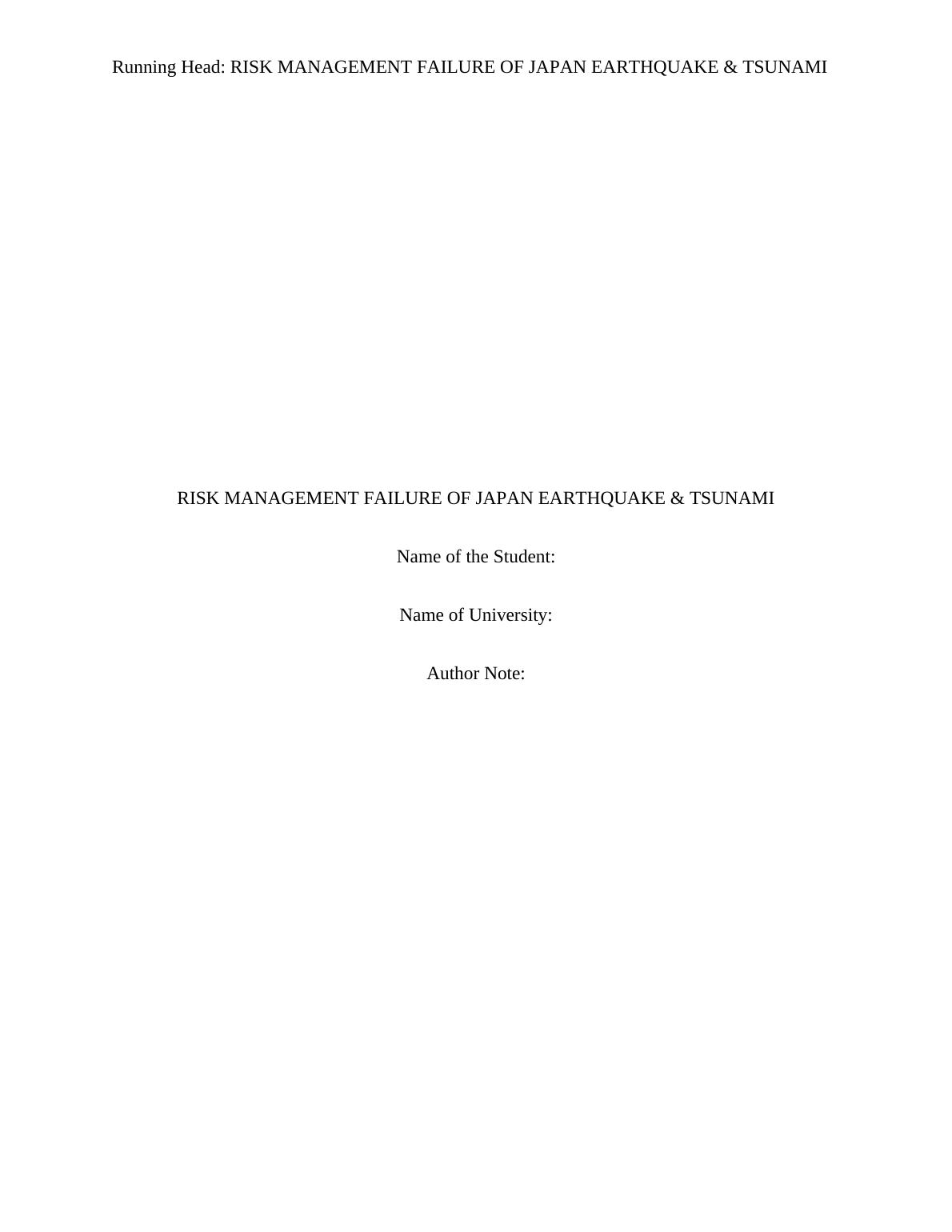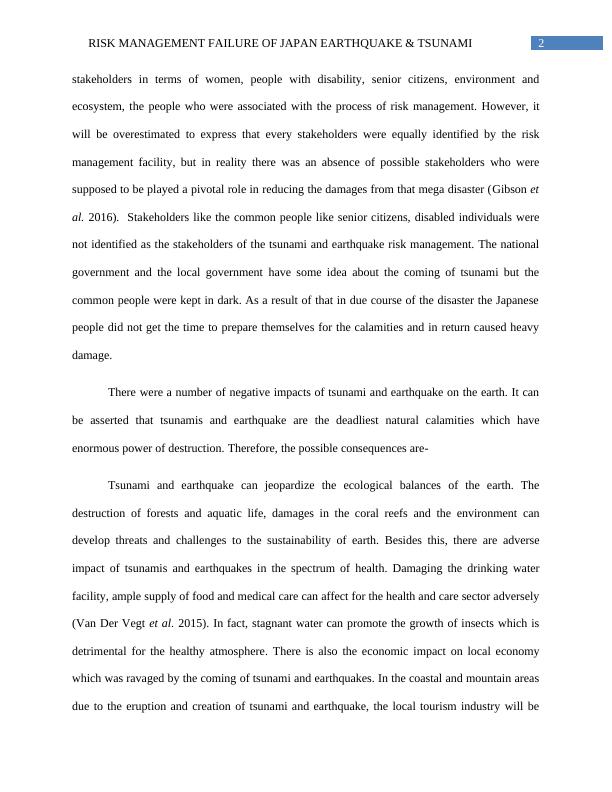Risk Management Failure of Japan Earthquake & Tsunami
Added on 2021-05-31
7 Pages1622 Words46 Views
Running Head: RISK MANAGEMENT FAILURE OF JAPAN EARTHQUAKE & TSUNAMIRISK MANAGEMENT FAILURE OF JAPAN EARTHQUAKE & TSUNAMIName of the Student:Name of University:Author Note:

1RISK MANAGEMENT FAILURE OF JAPAN EARTHQUAKE & TSUNAMIFor dealing with the adverse impact of natural disasters every country keeps a disastermanagement which is responsible to mitigate the impact with rigorous preparedness. Itincorporates a number of private sectors, communities, volunteers and individuals fromgovernmental and non-governmental organisations. In this case, Japan had witnessed acatastrophic natural calamity during 2011 which crippled the normal life of Japan with heavyloss of property and life (Olson and Wu 2015). In response to this a pertinent question arises inregards to the role of risk management. In order to get an advance alarm of the natural calamity,it is the responsibility of the risk management to estimate the fatality of the disaster and reducedamage. Therefore, the essay is going to discuss about the efficiency of risk management inJapan to reduce the damage caused by Tsunami and earthquake in 2011.Japan is encircled by world’s densest seismometer network and also has the biggest tsunamibarrier. Therefore, it was evident that the country would bear the highest amount of destruction.Despite of knowing this fact the risk management team of Japan was failed to reduce theintensity of the damage. As a result of that over 4 million buildings were ravaged and around28,000 people were found missing or dead (Gonzalez-Riancho et al. 2015). The destruction ofproperty was accounted over $300 billion which was about 4% of the GDP of Japan at that time(Suppasri et al. 2016). This was purely projected the failure of the risk management in Japan toget anticipation of the damaging capability of the disaster. Moreover, this failure in respect to therisk management exposed the inadequate measures taken by the risk management organisationand futility of their working process. Immediate mobilisation of resources was obstructed and inaddition to this the medical aid, food and water supply was severely damaged as well. In this spectrum there is a bigger dimension of stake holders associated with the riskmanagement of tsunami and earthquake in Japan. The country is divided into various kinds of

2RISK MANAGEMENT FAILURE OF JAPAN EARTHQUAKE & TSUNAMIstakeholders in terms of women, people with disability, senior citizens, environment andecosystem, the people who were associated with the process of risk management. However, itwill be overestimated to express that every stakeholders were equally identified by the riskmanagement facility, but in reality there was an absence of possible stakeholders who weresupposed to be played a pivotal role in reducing the damages from that mega disaster (Gibson etal. 2016). Stakeholders like the common people like senior citizens, disabled individuals werenot identified as the stakeholders of the tsunami and earthquake risk management. The nationalgovernment and the local government have some idea about the coming of tsunami but thecommon people were kept in dark. As a result of that in due course of the disaster the Japanesepeople did not get the time to prepare themselves for the calamities and in return caused heavydamage.There were a number of negative impacts of tsunami and earthquake on the earth. It canbe asserted that tsunamis and earthquake are the deadliest natural calamities which haveenormous power of destruction. Therefore, the possible consequences are-Tsunami and earthquake can jeopardize the ecological balances of the earth. Thedestruction of forests and aquatic life, damages in the coral reefs and the environment candevelop threats and challenges to the sustainability of earth. Besides this, there are adverseimpact of tsunamis and earthquakes in the spectrum of health. Damaging the drinking waterfacility, ample supply of food and medical care can affect for the health and care sector adversely(Van Der Vegt et al. 2015). In fact, stagnant water can promote the growth of insects which isdetrimental for the healthy atmosphere. There is also the economic impact on local economywhich was ravaged by the coming of tsunami and earthquakes. In the coastal and mountain areasdue to the eruption and creation of tsunami and earthquake, the local tourism industry will be

End of preview
Want to access all the pages? Upload your documents or become a member.
Related Documents
The Risk Management in Japanlg...
|8
|1012
|36
Surveillance and Disaster Management: Lessons from Earthquake and Tsunami in Japanlg...
|3
|579
|493
The Earthquake and Tsunami in Japan in 2011lg...
|4
|1097
|39
Effects of the Japanese Earthquake on Supply Chain Systemslg...
|18
|4693
|91
Tsunami in Thailand - Essaylg...
|5
|781
|487
Current/Recent Natural Disasters: Earthquakes, Tsunamis, and Hurricaneslg...
|8
|1625
|219
